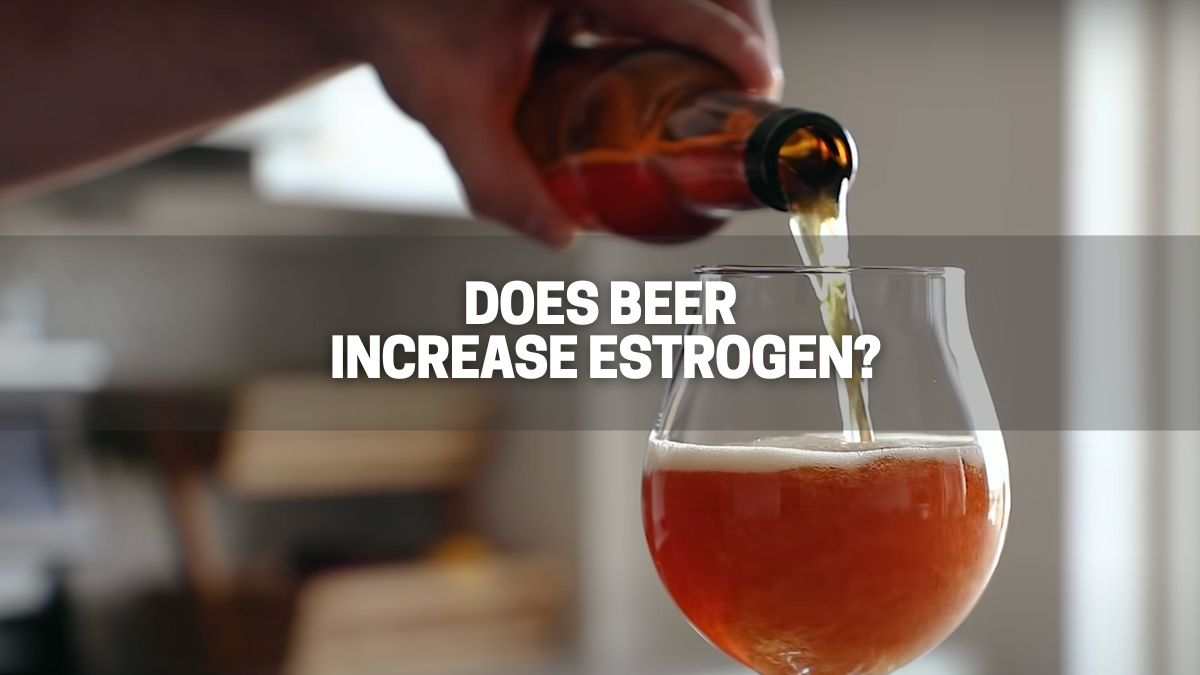Some stereotypes are hard to shake, and that can be especially true of what we consider “manly” things. What’s more masculine, for instance, than sitting down to a cold beer and a juicy steak? But if you’re one of the millions of men around the globe looking for T-Boosters or help with high-estrogen, then some of these stereotypes need to go.
Fact is, alcohol and beer specifically have some of the most powerful estrogen compounds known to science. And that could not only spell disaster for your T-Boosting goals, but for your overall health, as well.
What You Need to Know
The Chemistry of Alcohol
We won’t be discussing any of the antioxidant effects of wine, or the literal poisonous ethanol that’s responsible for that buzz we all like so much. Rather, we’ll be talking about the actual plant matter that causes estrogen in the male body.Dr. Judith S. Gavaler has been studying this phenomenon for decades, and her research has isolated phytoestrogens (estrogens from plant sources) in every ingredient of alcohol and beer–from hops to rice, from barley to corn.

Her research later led her to find that men who abuse alcohol develope not only female-like breasts, but even female patterned pubic hair (known as female escutcheon).
That means that no matter how you take your cold one, if it contains any ingredient that has phytoestrogens, then chemically speaking, you’re drinking female hormones. Gavaler’s work is not alone. Now we’ll look at the rest of the field.
Further Data
Other researchers have piled the data on; there’s no escaping the science. One team isolated one of the compounds in beer as the strongest food source of estrogen. Forget the horror stories about soy and cow’s milk–it’s that frosty can that’s really hurting you.
Scientists in completely different fields–like female reproductive health–have found that even moderate beer drinking can lead to lactation, even in non-milk-producing people.

Another experiment correlated how fast we drink alcohol to how rapidly they can detect female hormones in men; their introduction paragraph calls it the “phenomenon of feminization.”
There are literally dozens more studies out there correlating alcohol, and beer specifically, with higher estrogen levels. I’ve focused on the studies showing that correlation from plant to beverage, and in men. Last we take a look at one last hormone disrupting attribute of alcohol use.
Alcohol, Weight, and Lower T
Our final nail in the coffin comes from the association of alcohol use and obesity. This correlation is well-known, and most of us know that too many beverages definitely has an effect on our waistline. What some men may not know is that obesity in men has a tendency to lower Testosterone, as well.
That doesn’t mean that one beer will lead to 10 lbs., which will immediately kill all your T-production. But it is something to look out for, and keep in mind when deciding about that next drink.
Bottom Line
Many of the studies I’ve looked at focus on chronic, or long-term alcohol and beer consumption. That means that the greatest dangers of elevated estrogen don’t come from a weekend on the town–they come after months and years of sitting on the couch sipping suds.
But some of our data have shown short-term impacts of beer on estrogen. (One study of women found that acute alcohol consumption raised estrogen levels a staggering 300%.) Like with many things, you’ll need to consult your own body on this one. If you feel you may demonstrate the signs of high estrogen, examine how much you’re drinking. But in any case, no matter what your health goals, remember to moderate your alcohol consumption.
Related Articles: Best Testosterone Boosters, Testosterone vs Estrogen, How to Lower Estrogen in Men

